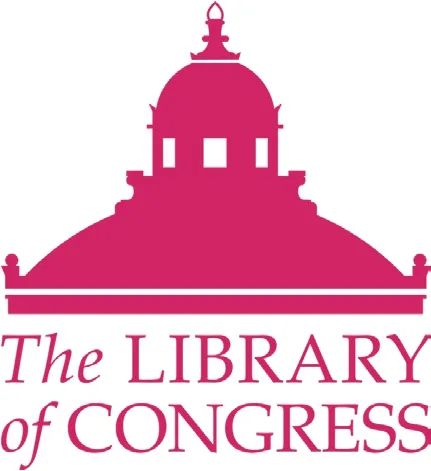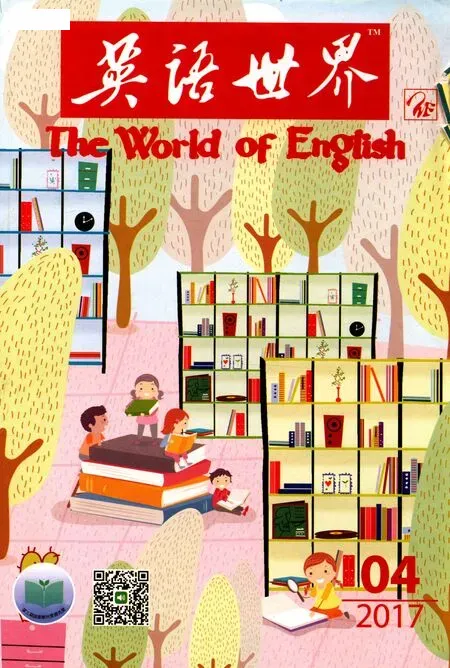A Brief History of the Library of Congress
By John Y. Cole
A Brief History of the Library of Congress
By John Y. Cole
The oldest cultural institution in the nation’s capital, the Library of Congress occupies a unique place in American civilization. Established as a legislative library in 1800, it grew into a national institution in the nineteenth century, a product of American cultural nationalism. Since World War II, it has become an international resource of unparalleled dimension and the world’s largest library. In its three massive structures on Capitol Hill, the Thomas Jefferson, John Adams, and James Madison Memorial Buildings, the Library of Congress brings together the concerns of government, learning, and librarianship—an uncommon combination, but one that has greatly benefited American scholarship and culture.
[2] The history of the Library of Congress is the story of the accumulation of diverse functions and collections. As a repository of information and knowledge, its collections in all formats now contain more than 103 million items—books, films, maps, photographs, music, manuscripts, and graphics—from all over the world. The scope of these collections is universal; materials have been acquired in more than four hundred and fifty languages. The Library is open to everyone over high school age, and more than two million tourists visit it annually.
国会图书馆是美国首都最古老的文化机构,在美国文明中独树一帜。1800年建立时,该馆是一座立法图书馆,19世纪时发展为国家机构,是美国文化民族主义的产物。第二次世界大战后,该馆成为世界最大的图书馆,拥有的国际资源前所未有。国会图书馆由位于国会山的三座雄伟建筑组成——托马斯·杰斐逊大厦、约翰·亚当斯大厦和詹姆斯·麦迪逊大厦,集政界、学界和图书馆界的关注于一身。此等融合非同一般,美国的学术与文化大得裨益。
[2]在不断发展的过程中,国会图书馆功能愈加多样,藏书日益丰厚。这是一座信息与知识的宝库,藏品来自世界各地,形式多样,超过1.03亿件,其中包括图书、电影、地图、相片、音乐、手稿和图像。收藏范围遍及全球,资料语种超过450种。该馆对高中学龄以上者开放,每年来此参观的游客超过200万人次。
[3] The Library of Congress has been shaped primarily by the philosophy and ideas of its principal founder, Thomas Jefferson, who believed that a democratic legislature needed information and ideas in all subjects to do its work. It was established by Congress on April 24, 1800, with an appropriation of five thousand dollars, as the government prepared to move from Philadelphia to the new capital city of Washington. From the beginning, however, the institution was more than a legislative library, for an 1802 law made the appointment of the Librarian of Congress a presidential responsibility. It also permitted the president and vice president to borrow books, a privilege that eventually was extended to the judiciary, officials of government agencies, and, under certain conditions, members of the public. Originally located in the Capitol Building, the Library moved to its own building in 1897. At the same time, Congress gave the Librarian of Congress sole responsibility for making the Library’s rules and regulations and invested in the Senate the authority to approve a president’s nomination of a Librarian of Congress.

[3]从根本上看,国会图书馆受其主要创建者——托马斯·杰斐逊的思想观点影响,杰斐逊认为民主国家的立法机关需要所有学科的知识和思想。1800年4月24日,美国政府准备从费城迁都华盛顿时,国会拨款5000美元建造了该馆。不过,从一开始,这个机构就不止是一个立法图书馆, 1802年的一项法案规定,国会图书馆馆长由总统任命,并允许总统和副总统在该馆借书。最终,该权利范围扩大至司法部门和政府部门官员,在特定情况下,公民也可在此借书。国会图书馆最初位于国会大厦中,1897年迁往独立的专属建筑。同时,国会授权国会图书馆馆长全权负责制定该馆规章制度,并赋予参议院权力,可投票表决总统对国会图书馆馆长的任命。
[4] Thomas Jefferson took a keen and continuing interest in the Library. In 1814, when the British invaded Washington, they destroyed the Capitol, including the Library of Congress. By then retired to Monticello, Jefferson offered to sell his personal library of more than six thousand volumes to Congress. The purchase was approved in 1815, doubling the size of the Library. It also expanded the scope of the collections. Anticipating the argument that his collection might be too wide-ranging and comprehensive for use by a legislative body, Jefferson argued that there was “no subject to which a member of Congress may not have occasion to refer.” The Jeffersonian concept of universality is the philosophy and rationale behind the comprehensive collecting policies of today’s Library.
[5] The individual responsible for transforming the Library of Congress into an institution of national significance was Ainsworth Rand Spofford, Librarian of Congress from 1864 to 1897. Spofford applied Jefferson’s philosophy on a grand scale. He linked the Library’s legislative and national functions, building a comprehensive collection for both the legislature and the nation. In obtaining greatly increased support from Congress, Spofford employed a combination of logic, flattery, and nationalistic rhetoric. In 1867 his acquisitions made the Library of Congress the largest library in the United States. Spofford’s other major achievements were the centralization in 1870 of all U.S. copyright activities at the Library—which ensured the continuing growth of the collections by stipulating that two copies of every book, pamphlet, map, print, and piece of music registered for copyright be deposited in the Library—and construction of a separate building, a twenty-six year struggle not completed until 1897.
[4]托马斯·杰斐逊一直深切关注国会图书馆。1814年,英国入侵华盛顿时摧毁了国会大厦,殃及国会图书馆。那时,杰斐逊已经卸任,居住在蒙蒂塞洛,他主动提出将自己私人收藏的6000多册书籍售给国会。此项采购1815年获批,使该馆藏书翻倍,藏书范围也得以扩大。预料会有人提出,他的藏书范围和涉及领域可能远远超过一个立法机构的需要,对此,杰斐逊表示,“国会议员可能用到任何一门学科的知识”。杰斐逊的这一普适理念正是如今该馆广泛收藏政策背后的哲学原理。
[5] 1864至1897年在任的国会图书馆馆长安斯沃斯·兰德·斯波福德使该馆转变成国家机构。斯波福德将杰斐逊的理念加以推广,结合了图书馆的立法职能和国家职能,使图书馆成为适用于法律体系和国家体系的综合性藏书机构。斯波福德运用条理清晰、富含恭维的民族主义言辞去争取国会更多的支持。1867年,国会图书馆在他的种种努力下成为美国最大的图书馆。斯波福德取得的重要成就还有:1870年,国会图书馆得以集中管理美国所有与版权有关的活动——如此一来,注册版权的图书、宣传册、地图、印章和音乐都要向国会图书馆提交两份复本,确保了该馆藏品不断增长;1897年,历经26年后,独栋大厦终于落成。
[6] Spofford’s concept of the Library of Congress as both legislative library for the American Congress and national library for the American people has been wholeheartedly accepted by his successors. Herbert Putnam, Librarian of Congress from 1899 to 1939, extended this philosophy still further. To Putnam, a national library was more than a comprehensive collection housed in Washington. It was “a collection universal in scope which has a duty to the country as a whole.” He defined that duty as service to scholarship, both directly and through other libraries.

[6]斯波福德认为,国会图书馆既是为美国国会服务的立法图书馆,也是为美国民众服务的国家图书馆,其继任者完全接受了这一理念。1899至1939年的时任馆长赫伯特·普特南将这一理念发扬光大。对普特南而言,国家图书馆不仅仅是位于华盛顿的一个综合性藏书机构,还是“一座藏书范围遍及世界、承担整个国家义务的图书馆”。他把这种义务定义为学术方面的服务,包括该馆的直接服务和通过其他图书馆提供的间接服务
[7] The first experienced librarian to fill the position, Putnam felt that a national library should actively serve other libraries, and he immediately began such a service. Through the sale and distribution of printed catalog cards, union catalogs1联合图书目录,指一种联合两所以上图书馆馆藏目录的数据库。使用者可以从单一窗口网站来检索国内多所图书馆的馆藏。interlibrary loan2馆际互借,是基于馆际之间资源共享而提供的一种服务。and other innovations, he “nationalized” the Library’s collections and established the patterns of service that exist today. During his tenure, the Library helped systemize American scholarship and librarianship through the widespread sharing of its bibliographic apparatus, thus encouraging a national view of scholarship and research collections and establishing pioneering partnerships between the federal government and the private sector.
[8] Balancing its legislative, national, and, after World War II, international roles, the Library of Congress has grown steadily. Historically, its major problem has been lack of space, not lack of support. Librarian of Congress Archibald MacLeish (1939–1944) stressed the Library’s roles as a symbol of democracy and a cultural institution. Luther H. Evans (1945–1953) pushed forward the Library’s bibliographic and international activities. L. Quincy Mumford (1954–1974) greatly expanded all the Library’s roles, but particularly its bibliographic activities and foreign acquisitions.
[7]普特南是首位有工作经验的馆长,他认为,一个国家性质的图书馆应当积极为其他图书馆服务,并就此即刻开展工作。通过出售和发行印制目录卡片,制作合作图书馆联合图书目录,开展馆际互借和实施其他创新举措,他使该馆藏品“国有化”,并建立起沿用至今的服务方式。在其任期内,该馆通过书目系统的广泛分享,使美国的学术和馆藏事业系统化,从而促进了国家层面上的学术研究与馆藏研究,并在联邦政府和私人机构间建立了开创性的合作关系。
[8]通过平衡其立法职能、国家职能和二战后的国际作用,国会图书馆稳步发展。过去,它的主要问题是缺乏空间而非缺少支持。馆长阿奇博尔德·麦克利什 (1939-1944)强调,该馆是民主的象征,也是一个文化机构。卢瑟·H.埃文斯(1945-1953)推动发展了该馆的书目和国际活动。L.昆西·芒福德(1954-1974)极大扩展了该馆的所有职能,尤其是在书目活动和采购外国出版物方面。
[9] A new public role for the Library began to emerge under the leadership of historian Daniel J. Boorstin, Librarian of Congress, 1975–1987. Emphasizing the Library’s role as a national cultural resource, he greatly increased the institution’s visibility. Boorstin’s successor, historian James H. Billington (1987–2015 ), has vigorously pursued a similar course. He also has established private sector support groups and an educational role for the Library, using new technologies to share the Library’s collections with the nation. Now, the Library of Congress is still guided by Thomas Jefferson’s belief that information and knowledge about all subjects are essential in a democracy—for legislators and citizens alike. ■
[9]历史学家丹尼尔· J.布尔斯廷于1975至1987年担任馆长,在他的带领下,该馆具有了新的社会作用。他突出了国会图书馆的国家文化资源作用,极大提高了该馆的关注程度。其继任者詹姆士· H.比林顿 (1987-2015)大力推进了这一发展,不仅建立起私人机构支持团队,还采用新技术让全国共享该馆藏品,充分发挥了国会图书馆的教育职能。时至今日,该馆仍然遵从托马斯·杰斐逊的信条——对于民主国家的立法者和公民而言,所有学科的信息和知识都是必要的。 □
美国国会图书馆简史
文/约翰·Y.科尔 译/邓梦寒
(译者单位:上海交通大学)

